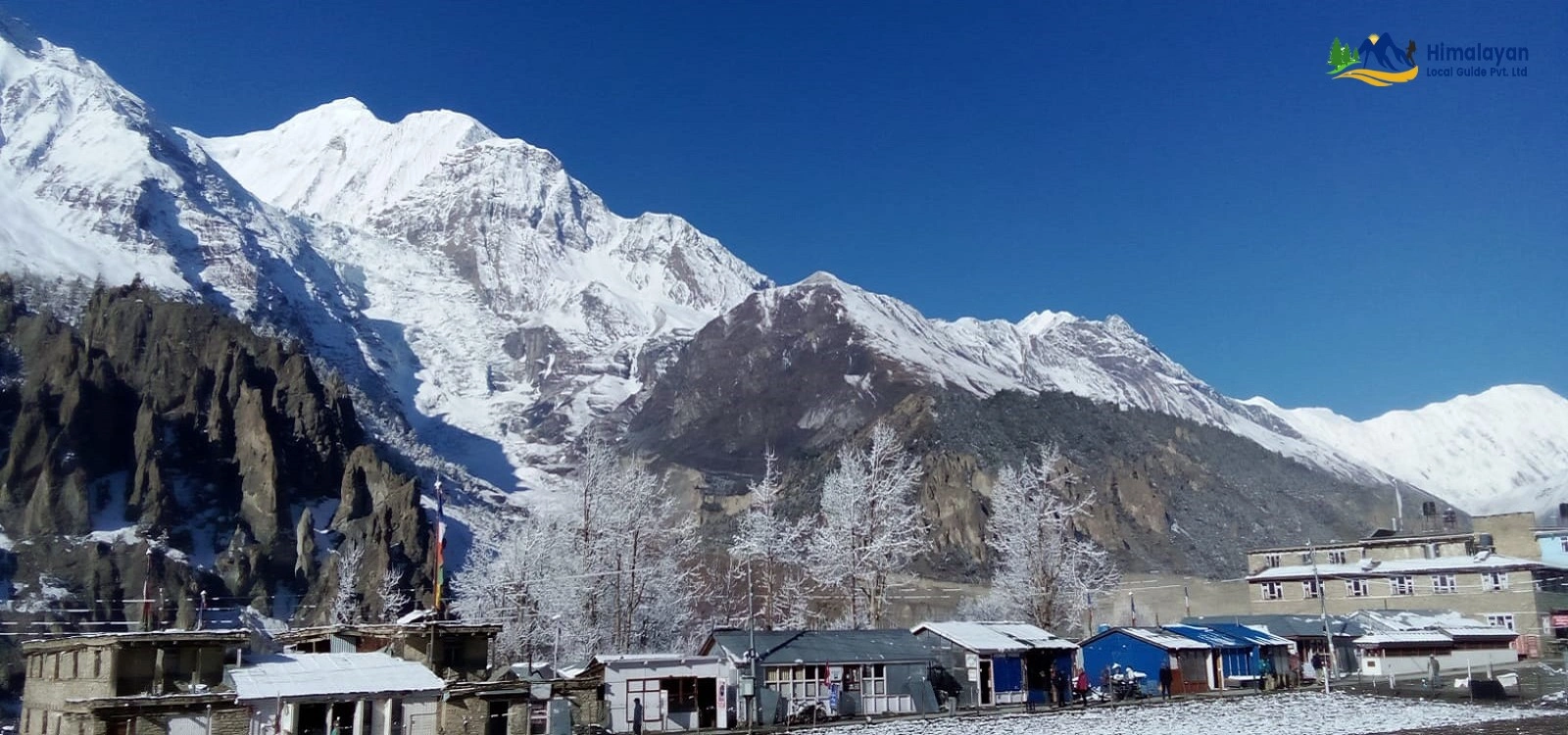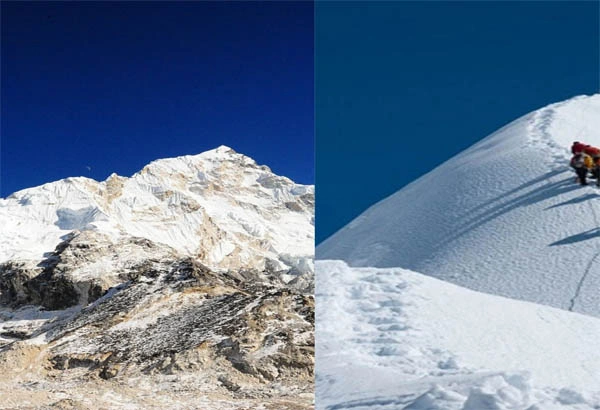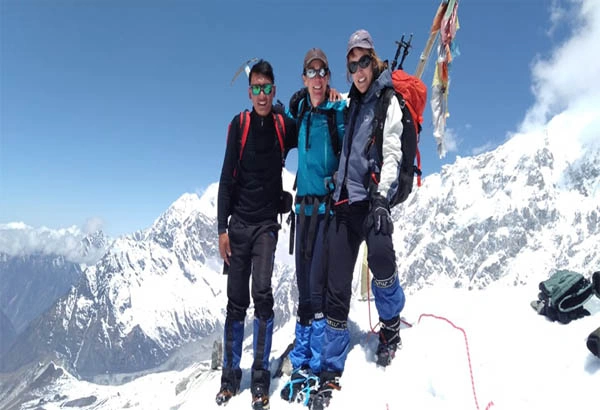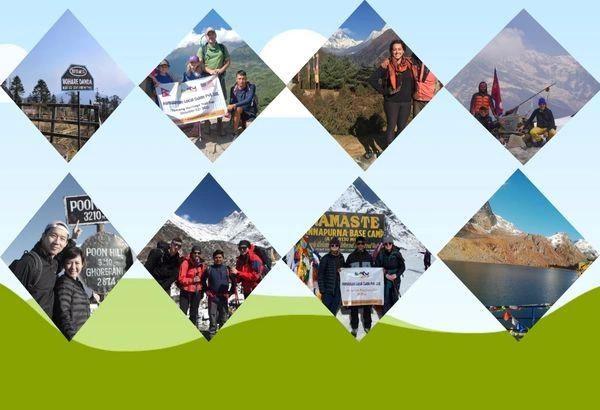Manang is one of the most popular villages in the Annapurna circuit trek route. It is located at around 3,5 45 meters (11,630ft) above sea level, where you can explore the boasts a rich blend of geography, history, landscapes, and diversity of local peoples and ethnicities making it a central stop along the well-known Annapurna Circuit trekking.
Geography of Manang Village:
The Manang village is on the wide Marshyangdi River valley. This river flows from the eastward the north lies in the Chulu East Peak and to the west is the Thorong La. From the Manang Village, you can enjoy the stunning vistas of Annapurna II, Annapurna III, Gangapurna, Pisang Peak, Tilicho Peak, and many other white snow-capped mountains. Its high elevation location contributes to unique scenery characterized by rocky landscapes, alpine meadows, and icy lakes.
Manang village now has joined motorable roads, along with the traditional trails used for transporting goods by TATA Samuha Jeep, Mule, or porters in the before.
History and Cultural:
Manang town has an enthralling history well-established in the very old trade routes that once connected Tibet with the lowlands of Nepal and India. Its historical consequence is reflected in the village’s design with traditional Tibetan technique stone houses and Buddhist monasteries dotting the landscape. Manang has been a central take-it-easy stop for pilgrims and traders, causative to its rich local cultural heritage sites.
People and Religions:
The inhabitants of manage are predominantly of Tibetan descent, belonging to the Gurung and Manangi tribal groups. The famous ethnicities are Tamangs, Gurungs, Magars, Rais, and Bhotes. Most of these ethnicities follow Buddhism. Their ethnicity and society are diverse and influenced by Tibetan Buddhism. Trekkers to Manang can take pleasure in warm hospitalities with locals enthusiastic to share their customs and way of lifestyle.
Visiting places near at Manang Village:
The Manang is an ideal village for acclimatization during the Round Annapurna trek. However, there are several abundance of activities you can join in while acclimatization. Here are some side trips you can take part in.
- Ice Lake.
- Braga Gompa.
- Milarepa’s Cave
- Gangapurna Lake.
- Old Manang Village (Tenki Manang).
Note: This day, you do not need to carry the big back, only you need some warm clothes, a hiking pole, a bottle of water, energy foods, etc.
When is the best time to Visit Manang?
The best time to visit the Manang village is either spring or autumn season. During the spring season time, the weather will be generally stable and mild, making it perfect for trekking at high elevations. The scenic landscapes come alive with colorful blooms of Nepalese national flowers of rhododendrons and other flora and fauna, adding an attractive feel to your trekking experience.
Another best time to explore the Manang village is during the autumn season also offers outstanding conditions for visiting the Annapurna including Jagat, Chame, Dhukur Pokhari, Pisang, and Manang with surrounding areas. During this period, the skies will be typically clear offering the magical vistas of the surrounding Himalayas. The trekking trail remains dry and stable, which is optimal for treks in the high elevations around the Manang.
Moreover, trekking during the autumn season allows you to dip manually in the festival atmosphere of Nepal, as main Hindu festivals alike Tihar, Dashain, and Chhat are celebrated during this period, adding a cultural measurement to your adventure.
During the monsoon season (June, July to August), we do not recommend you explore the Manang Valley during this season due to heavy rainfall, landslides, leeches, and risk.
Winter Season (December to February) you can explore this trip. However, it will be challenging due to the cold temperatures and heavy snowfalls. Therefore, planning your trek during the spring or autumn months will ensure a comfortable and rewarding experience in the Manang village of Annapurna circuit trekking routes.
Do I need the permits to visit the Annapurna Manang?
If you are planning to trek along the Annapurna Manang region, then you need two types of permits required:
- Annapurna Conservation Area Project Permit :( ACAP) permit will support the conservation efforts and sustainable management of the local areas ‘natural resources and biodiversity.
- TIMS Card Permit: (TIMS) Trekker’s information Management system.
ACAP permit and TIMS Card Fees:
- ACAP permit fee is 3000 NPR per head for Foreign Countries.
- ACAP permit fee is 1000 NPR per head for SAARC Country.
- TIMS Card fee is 2000NPR per head for Foreign Countries.
- TIMS Card fee is 1000 NPR per head for SAARC Country.




